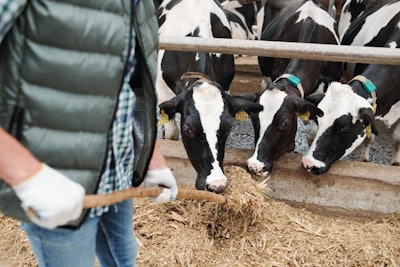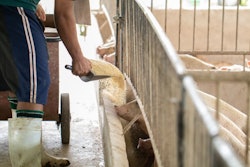
‘Culture of care’ starts by looking through the lens of people who tend to animals on-farm
Animal welfare is usually approached from an animal’s point of view, but it is also important to think about it through the viewpoint of the people who care for the animals on-farm.
That was the topic of an Animal Agriculture Alliance Virtual Stakeholders Summit pre-conference webinar, “Building a Culture of Care,” on May 6.
“When we typically think about animal welfare, we usually think through the lens of the animal, so we’re typically very animal-centered in our approaches,” said moderator Michelle Calvo-Lorenzo, Ph.D., chief animal welfare officer for Elanco Animal Health. However, “looking through the lens of caretakers – those folks that tend to animals, livestock and poultry day in and day out – this is a very important aspect of animal welfare that our industries need to continue considering and developing strategies for, because when we think about the very basics of these livestock animals, they’re domestic animals, which really rely on their human caretakers for all of their needs and their wants.”
She said a ‘culture of care’ that ends with good animal welfare begins with people.
“We’ve got to take into consideration the people aspect of this, so it’s important to think about things like empowering our caretakers, removing barriers and challenges, establishing positive workplace cultures, or a ‘culture of care’ … and find ways to boost employee morale and satisfaction,” she said. “Because it truly is a win-win-win when you have employees that feel empowered, confident and content in what they do every day on the farm, it builds a wonderful human-animal interaction or bond between that caretaker and the animals they tend and, ultimately, it leads to optimized animal welfare outcomes, all of which we are trying to advance every single day.”
Employee-first commitment
Josh Linde, pig farmer and general manager in the Heartland Region at The Maschhoffs, said that when employees are cared for, so are the animals they care for.
“The commitment to care is an employee-first commitment to care,” he said. “We have to ensure that our employees are well cared for, have a safe work environment, they feel well cultured with one another, they’re trained on their jobs and their tasks on a daily basis to ensure the care of the animals.”
Robert Hagevoort, Ph.D., associate professor and extension dairy specialist at New Mexico State University, said employee training and education builds confidence, therefore leading to better outcomes for humans and animals.
“If we want to improve human well-being or human performance … how can we train and educate these workers to where they can do a better job, or better understand what they are doing, or the ‘why’ to what it is they’re doing?” he asked. “How does the level of knowledge about large herding animals affect the person’s animal handling skills and, as an outcome, their safety as they are working in that position, but also the well-being of those animals that they take care of?”
He said farm managers should focus on coaching the attitudes of their workers, such as motivation, confidence, integrity, honesty, enthusiasm and commitment.
When handlers have the right attitude around animals, it is evident in the animals’ behavior, Hagevoort said.
“Dairies where handlers understand why they are doing what they are doing, cows are calmer, they are more curious and less fearful of humans and human interactions,” he said. “If people understand herding behavior and they’re confident that they can approach that 1,500-pound animal without getting hurt in the process, they have more confidence about what it is that they do.”
Conversely, he added, employees that don’t have the training or knowledge about animal behavior are not set up for success.
“Employees typically mean well, but if you can’t anticipate what an animal is going to do, it is very easy to get frustrated, and frustration is the perfect setup for the wrong outcome and possible animal mishandling or abuse,” he said.
Individualized training
Linde added that individualized training at The Maschhoffs has been successful.
“We look at this as an individual basis, that each person has a special set of skills and each person is unique in their own way, and so it’s really working with individuals to find what skills they have and where we can apply those to be more successful to them to really thrive inside the environment of our farms,” he said.
Different positions require different skills sets, so “if we try to treat everybody as one, we have the same training program for everybody, we wouldn’t be near as successful as we are.”
Max Irsik, manager at KCoe Isom LLP, said the ability to be humble and have empathy to help employees feel like they belong to a higher purpose is key.
“I think of the ‘culture of care’ as being a servant leader, in the fact that you are putting that animal or that employee or that piece of ground before your own needs. At the end of the day, we’re all better off for that,” he said.











